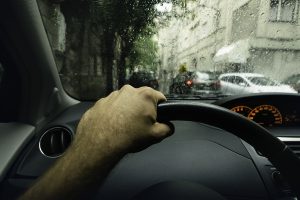Is Rain A Factor In Car Accidents?
 Michael Babboni
Car Accidents
No matter where in the world you go, one of the things that can affect the conditions of a road is the weather. For people that live in northern states, where snow can accumulate by a few feet, weather can be a severe enough during the winter season that schools may shut down as snowfall blocks roads or temperatures drop to dangerous levels.
Michael Babboni
Car Accidents
No matter where in the world you go, one of the things that can affect the conditions of a road is the weather. For people that live in northern states, where snow can accumulate by a few feet, weather can be a severe enough during the winter season that schools may shut down as snowfall blocks roads or temperatures drop to dangerous levels.Fortunately, in Florida, we simply don’t get that kind of weather. But that doesn’t mean that weather is never a factor here. While we may not get winter storms, we certainly get times of the year when hurricanes are more likely to form at sea, and then hit the shore and our state. Even without hurricane conditions and the winds that come with them, plain old rain can sometimes be a big enough threat that it significantly raises the risk of a car accident on our roads. But how?
Visibility
This is mostly an issue during severe rainstorms, for people that are unfortunate enough to have to be driving as they occur. Very bad rainstorms can, in their own way, be just as bad as snowstorms in that they diminish just how much you are able to see ahead of you. While it’s true that we have windshield wipers that are supposed to clear water droplets that may obscure vision, even these mechanical aids can only do so much when the rain is very heavy.
Another issue is the time of day. A heavy rainstorm is bad enough, but if it’s a heavy rainstorm at night, most drivers would be advised to not get on the road unless it was absolutely necessary, such as professional freight hauling, or people that are coming home from a late night at work. The combination of darkness and rain results in a massive reduction in visibility that means you may not see incoming hazards until it’s too late to react.
Slippery Roads
When you walk on the sidewalk when it rains, your feet generally have all the traction they need, and you don’t need to worry about slipping. So why is it that when it rains, roads can get slippery for cars, even though asphalt is a rough, rocky surface, similar to concrete?
There are a few reasons for this. The first is the difference in physics. A person weighs much less than a car and is, more importantly, moving at a much slower speed. These two factors mean that there is far more control and time to react because a foot remains on the ground for a much longer period than one segment of a tire as it rolls over a road.
However, the other big factor is that rain “fills in the gaps.” Friction is a result of the rubber on a tire making contact with the various irregularities in asphalt. The unevenness that results from the bumps in asphalt touching the tire is what allows the tires to grip the road as a car moves along. However, when rain falls, the liquid settles into these irregularities and “smooths them out,” creating a less rough surface, making traction more difficult.
This, combined with the speed and mass of car mean that roads can provide much less traction during critical maneuvers, such as braking or turning. That can result in slips, slides, and other forms of loss of control on the road that significantly raises the risk of an accident.
Hydroplaning
A more extreme version of the slippery road, hydroplaning is one of the biggest risks when it comes to car accidents caused by rain. If we look at the previous example, we see that water can smooth out a road surface, providing less traction. Hydroplaning, however, goes a step further, denying a tire any contact with the road at all.
Hydroplaning occurs when there is a lot of water on the road. Normally, when a tire meets low amounts of water on the road, it “scatters” or pushes it away as it moves so it can make contact with the actual asphalt. However, given enough water, and enough speed, a car’s tires may no longer be able to do so, and start moving directly on top of the water surface, rather than moving it aside.
When this occurs, it is just like the tire is on the ice, and there’s little to no traction at all, causing the car to lose to control because it can no longer grip the road. This can lead to collisions with other vehicles, or going off-road entirely.
Assigning Blame
In most cases, ignoring weather conditions and driving as normal would mean a rain-related accident is the fault of the driver because he or she was not making appropriate, sensible driving adjustments for road conditions. However, in some cases, the fault may be with the road itself, due to poor design. It’s important to talk to professionals, such as an auto accident lawyer to find out what to do next.
